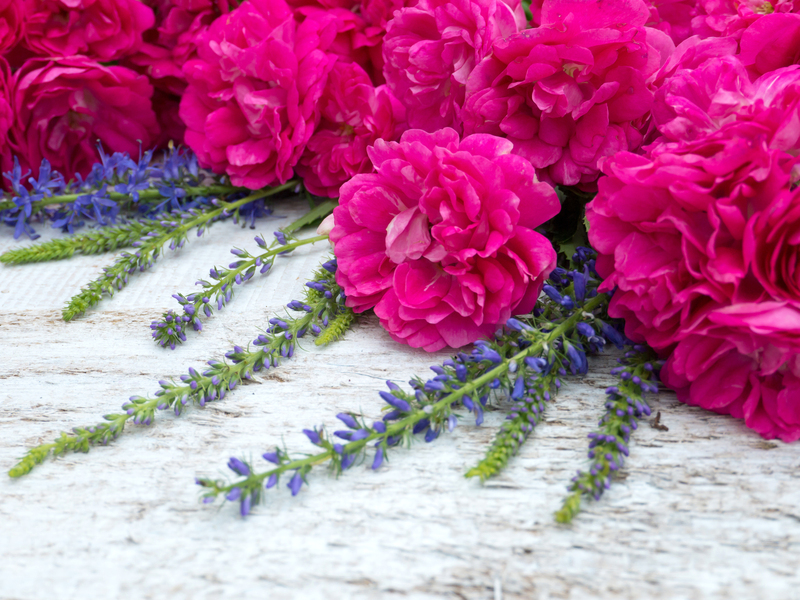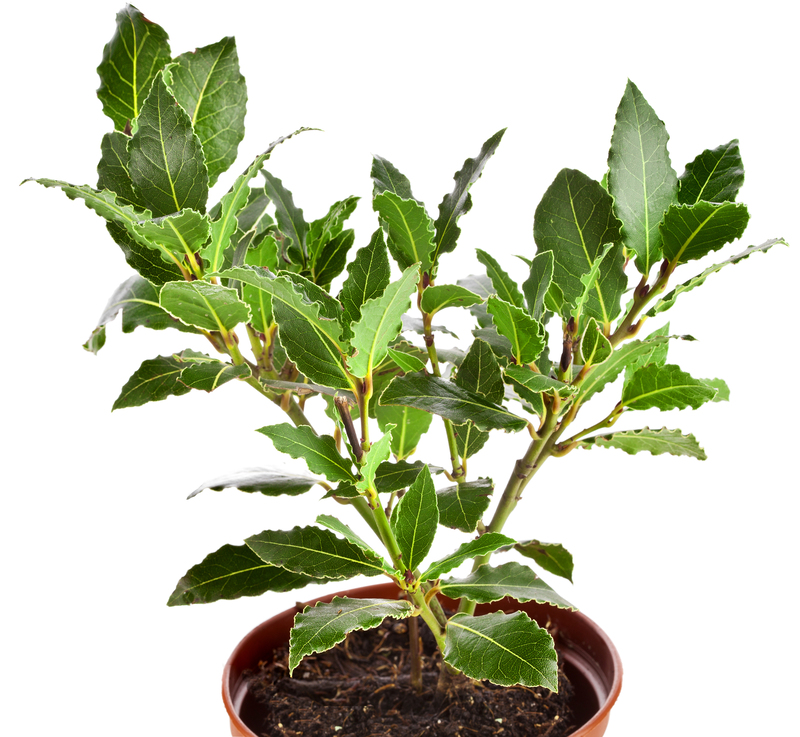Integrating Your Dog into the Garden Experience
Posted on 28/06/2025
Integrating Your Dog into the Garden Experience: A Comprehensive Guide
Gardening is more than a hobby--it's a lifestyle that enriches both humans and their canine companions. Whether you're cultivating roses or nurturing a vegetable patch, your dog can be a meaningful part of the garden experience. Learn how to safely, joyfully, and effectively integrate your dog into your garden for mutual enjoyment and well-being.

Why Integrate Your Dog into the Garden?
Your canine friend is a natural explorer and loves being outdoors, which makes the garden an ideal space for bonding, exercise, and enrichment.
- Physical Exercise: Dogs thrive when they have safe, open areas to run and play.
- Mental Stimulation: Gardens stimulate your dog's senses--smells, sights, textures, and sounds.
- Social Connection: Shared activities strengthen your bond with your pet.
- Natural Training Opportunities: The garden offers a dynamic setting for reinforcing obedience and boundaries.
Understanding Your Dog's Needs in the Garden
Before introducing your pet to the garden, consider their unique needs. Age, breed, and temperament all influence how your dog interacts with the space.
- Active breeds may require more space and physical obstacles.
- Sensitive dogs benefit from quiet, shaded areas.
- Puppies and senior dogs might have special access or supervision requirements.
Creating a Dog-Friendly Garden
Designing with Canines in Mind
When planning your landscape, balance your aesthetic vision with dog-friendly priorities. Here are some garden integration tips for pet owners:
-
Paths and Trails: Dogs often create their own routes.
- Establish designated dog trails using mulch, gravel, or stepping stones. Following their favorite paths reduces trampling of prized plants.
-
Secure Boundaries:
- Install sturdy fencing to prevent escapes and keep wildlife out.
- Check for gaps and ensure gates latch securely.
-
Play Zones:
- Dedicate a section for digging or play. Fill a sandbox with sand or loose soil and bury toys to encourage constructive digging.
-
Shade and Shelter:
- Add arbors, pergolas, or large shrubs to provide shade.
- Set up a doghouse or waterproof shelter for protection from the elements.
-
Fresh Water:
- Keep a large water bowl or pet fountain topped up throughout the day.
Choosing Dog-Safe Plants
Not all garden plants are safe for dogs. Some common varieties can be toxic if ingested or handled excessively. When pursuing a harmonious garden experience with your dog, consider these guidelines:
- Safe Options: Sunflowers, rosemary, marigolds, snapdragons, and camellias are all non-toxic to dogs.
- Plants to Avoid: Beware of azaleas, daffodils, foxglove, lilies, and oleander, which can cause poisoning.
- Mulch and Soil: Use cedar or pine mulch. Avoid cocoa mulch (toxic to dogs).
Benefits of Integrating Your Dog into Outdoor Spaces
- Reduces behavioral problems like chewing, barking, and digging elsewhere in the home.
- Provides healthy exercise for dogs and owners alike, promoting joint health and weight management.
- Enriches your dog's life by making use of scent trails, textures, and mental challenges in a safe environment.
- Facilitates training through natural distractions and hands-on interaction.
- Boosts well-being for you and your dog--studies show outdoor time lowers stress and improves mood.
Training Tips: Helping Your Dog Be a Positive Garden Companion
Setting Boundaries
- Use visual cues: Low fences, rocks, or plant borders help dogs understand off-limits areas.
- Positive reinforcement: Reward desired behavior with treats or affection.
- Supervision during transition: Monitor your dog initially until they learn the garden's rules.
Discouraging Digging in Unwanted Areas
- Redirect: Praise your dog when they use the designated dig area.
- Discourage bad spots: Place decorative rocks or use motion-activated deterrents in sensitive beds.
Manners with Plants
- Teach "leave it" or "off" commands for flowers and edible plants.
- Be patient and consistent; repetition yields results over time.
Integrating Dog-Friendly Features into the Garden
Enhance your joint pet and garden experience by tailoring features your dog--and you--will love:
- Water Features: Many dogs enjoy shallow ponds or splash pools. Ensure water is clean and accessible.
- Agility Equipment: Tunnels, jumps, and balance beams foster physical fitness and fun.
- Scent Gardens: Plant herbs like mint, basil, and thyme in clusters; these provide irresistible scents for natural sniffing games.
- Bug & Pest Control: Use pet-safe deterrents like diatomaceous earth or hand-picking pests rather than chemical sprays.
Practical Considerations for Dog and Garden Harmony
Routine Maintenance
- Pick up after your dog: Dog waste can harm plants and attract pests.
- Inspect fences/doors regularly: Ensure there are no escape points.
- Check for hazards: Remove sharp objects, thorny branches, and access to compost bins.
Integrate Seasonal Activities
- Spring: Involve your dog in planting sessions; let them dig in their special spot while you garden.
- Summer: Play fetch with water toys or offer frozen treats during warm afternoons outside.
- Autumn: Dogs love romping in piles of leaves. Include them in the cleanup as a fun game.
- Winter: If climate allows, create sniff walks on safe, snow-dusted paths or use raised beds for supervised digging.
Common Challenges and Solutions
- Digging in flowerbeds: Provide an approved dig zone and use sturdy edging to deter intrusions elsewhere.
- Chewing plants: Plant bitter, non-toxic herbs or use sprays to deter interest. Remember proper supervision and redirection.
- Urine burns on grass: Train your dog to go in a gravel or mulch area, or dilute spots with water.
- Escaping: Regularly walk the perimeter to look for weak spots, and consider burying chicken wire at the base of fences for diggers.
Strengthening the Human-Canine Gardening Bond
Shared Activities in the Garden
- Engage in joint gardening projects, like planting a "dog vegetable bed" with carrots or green beans.
- Try canine scent games: Hide treats among non-toxic plants or in snuffle mats outdoors.
- Schedule garden picnics; let your dog relax nearby as you enjoy your handiwork.
- Involve your dog in composting, letting them watch or sniff (without eating!), fostering curiosity and relaxation.
Relaxation Spaces
Designate a cozy rest area with a dog bed, shaded umbrella, and a favorite toy. Positive, restful time helps associate the garden with comfort and calm.
Safety Tips for Dogs in the Garden
- Supervise your dog during initial garden exposure and revisit ground rules as needed.
- Avoid pesticides/herbicides: Many chemicals are harmful to pets, even after drying.
- Secure compost bins: Decomposing materials can contain toxins or attract dogs to dig or eat unsuitable items.
- Beware of water hazards: Supervise dogs around ponds or fountains, especially puppies and older pets.
- First aid knowledge: Familiarize yourself with common garden poisons and have the vet's number handy.
Integrating Puppies Versus Adult Dogs
Puppies
- Use playpens or temporary fencing for safe exploration.
- Set up soft ground covers for tiny paws.
- Begin obedience training early with short, frequent garden sessions.
Adult/Senior Dogs
- Accommodate mobility issues by keeping paths clear and level.
- Offer extra soft bedding and shaded napping areas.
- Monitor more closely for garden hazards, as older dogs may be less aware.

Frequently Asked Questions about Dogs and Gardening
What if my dog won't stop eating plants?
Some dogs nibble out of boredom or curiosity. Use positive reinforcement for good behavior, and provide chew toys or treats to redirect this urge. Avoid leaving your pet unsupervised until their interest in plants wanes.
How do I prevent my dog from trampling delicate plants?
Define clear borders using low fencing or dense plantings. Train "stay" or "off" cues and use mulch paths to indicate safe walking zones.
Which outdoor tools and products are safe for dogs?
Choose pet-friendly weed killers, fertilizers, and mulches. Store tools with sharp edges out of reach. Rinse watering cans and buckets frequently to prevent algae or other hazards.
Integrating Your Dog into Gardening: Final Thoughts
With thoughtful planning, integrating your dog into the garden experience becomes a rewarding journey for you both. Respect your canine companion's instincts while protecting your plants and garden investment. Over time, you'll cultivate not just blooms and harvests, but also a deeper, more joyful relationship with your pet.
Explore, create, nurture, and enjoy--together.

